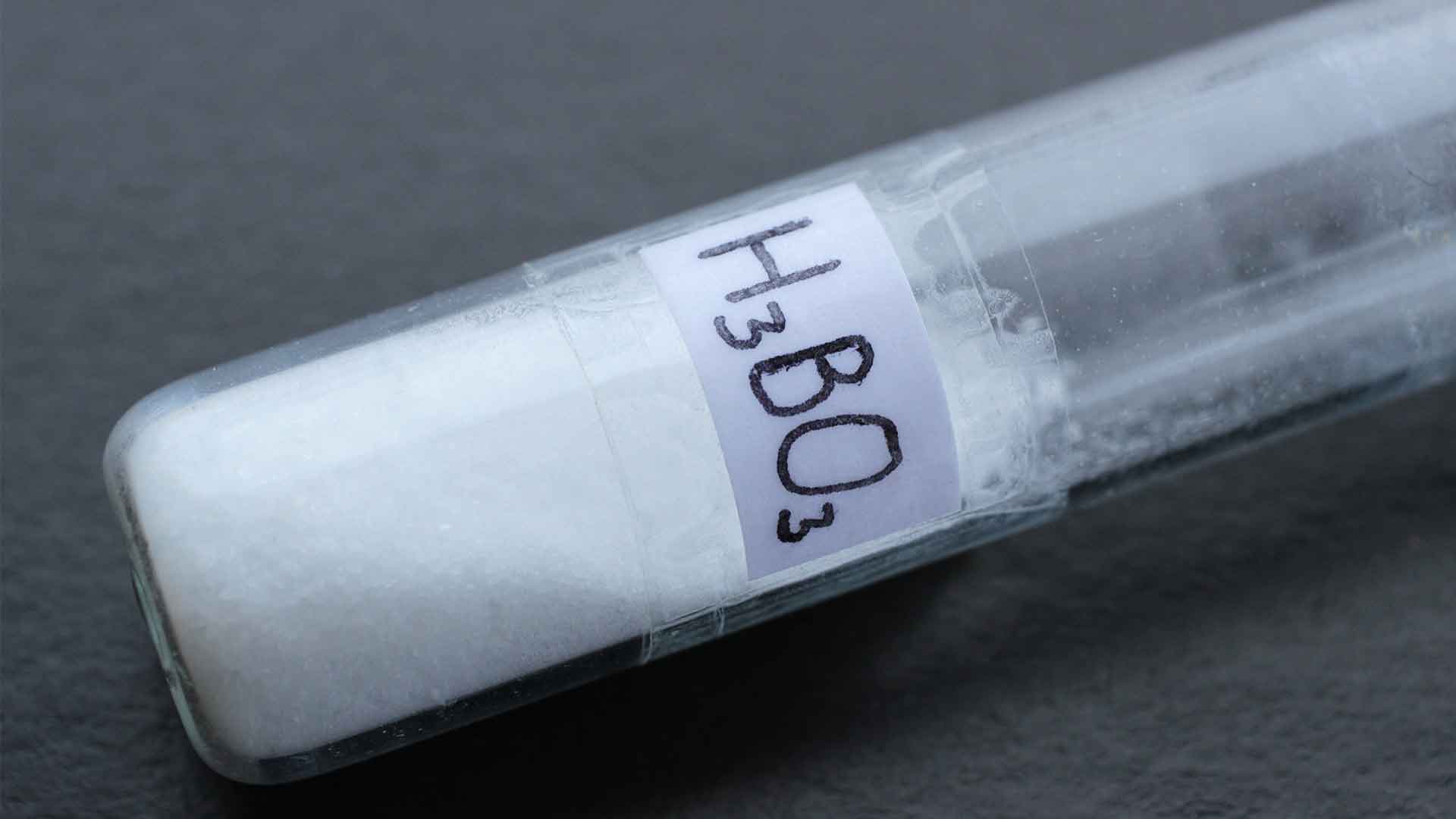Towards a Low Carbon Boron Future
We live in a world where the environment is constantly going through changes. This is because we are running out of fossil fuels, and all it takes for our society to collapse is one more natural disaster. Therefore, the invention of new materials that facilitate the mission statement of a low carbon future is essential in today’s day and age to decrease our dependence on fossil fuels.
A low carbon future is a future wherein we can guarantee that our future generations will not run out of carbon and sustain the planet based on other fuels and more efficient tools that judiciously use power.

STEP 1: ECO-FRIENDLY SOCIETY
The first step in creating an eco-friendly society is producing alternative fuel production methods not to need fossil fuels. Moreover, the process required to make these fuels needed to be optimized and streamlined as much as possible. For example, it is estimated that major contributors to carbon emissions – the mining and plastics industry – can reduce up to a whopping 40% of their carbon emissions via improving their current production infrastructure.
The second step would be to invest heavily into developing new materials that can replace the current materials. One such material used to produce low-carbon materials and tackle the global warming problem is boron nitride nanotubes. The new development of these materials may prove groundbreaking as they can store more energy than silicon, making them perfect for several uses in our everyday lives. These include power plants, electric cars, and even solar panels.
Moving towards a global low carbon economy
The natural question of aiming for a low carbon future is to determine the functioning of the economy for the said future. A report by Rio Tinto lists four key factors that’ll be involved in the same –
- The decoupling of economic growth and energy demand
- A transition away from fossil fuels as the main energy source
- Electrification of homes, industries, and transport, supported by new technologies, a growing renewable power base, and the use of hydrogen
- The deployment of carbon removal projects, including nature-based solutions
- Increased material efficiencies, re-use, and recycling, i.e., the circular economy.
All these driving forces will be crucial in determining the success of a low-carbon future, and soon, countries can get there. They will, of course, require global collaboration on 2 fronts –
- Governments – The governments of the world need to foster collaboration present a united front in collaborating regarding resources and information.
- Science – Researchers from every country are working towards a more sustainable future, and we must incentivize collaboration worldwide to bring industry-leading research into promising real-life applications.
The roster of materials needed for a low-carbon future
Mining groups need to prepare for the cultural shift that’s about to happen due to decarbonization goals set in The Paris Agreement by most countries in the world. In such a dynamic environment, it is financially feasible and environmentally ethical to be prepared for the changes that are about to come and be prepared for them and be a driver of sustainable change.
To accomplish their target while staying in business, they need to shift focus from fossil fuels to produce materials that’ll be indispensable shortly. These materials are –
Lithium
Lithium is a chemical element found in trace amounts within the Earth’s crust determined to be necessary for healthy humans. As a result, lithium is playing an increasingly significant role as one of the most valuable components to build a better battery for your phone or laptop with – now it can be found inside every rechargeable cell that powers these gadgets and electric cars.
Recent efforts in using lithium to produce decarbonized energy have been successful. Batteries have a significant impact on reducing CO 2 emissions, and they are expected to play an important role in achieving global climate change objectives. For batteries operated by renewable sources (e.g., wind or solar) to be able to function efficiently, it is essential that their output voltage can match with the grid’s input voltage from power plants without needing any conversion devices as well as being capable of enabling recharging at low cost and long distances away from charging stations – all while maintaining safety performance standards such as protection against over-charge, discharge currents during normal operation mode or when delivered into another system via switchgear coupling current transformer fault interruptions; short circuit interruption capability.
Boron

Boron is a chemical element that is important for the preservation of many things. While it is a versatile element with applications in aerospace, agriculture, mining, energy, and various other industries, its applications as a source of energy have been groundbreaking. Boron plays a huge role in decarbonization, a process in which carbon emissions are decreased by removing or reducing its presence. Boron is also an essential component for producing lithium-ion batteries, as, without it, this technology would not exist.
Boron’s properties make it possible to be used as an additive that strengthens aluminum alloys and creates new high-strength materials with low weight. That’s why the Aerospace industry has been using Boron for decades for manufacturing aircraft components. One can then find these boron-enhanced materials from wind turbines to future cars because they have higher strength at lower weights than standard steel and other metals with similar mechanical characteristics.
Furthermore, Boron is used to making the superconducting materials needed for high-performance magnets in MRI machines. Boron alloys are also finding structural and reinforcing components of lighter weight but stronger buildings and bridges. Other new applications include its use as a catalyst in fuel cells to help power vehicles without using fossil fuels like oil or natural gas. Hence, Boron is advantageous for future energy sources and has been used by the energy industry for years to improve efficiency.
The production process for boron-based material consumes much less energy than silicon, leading to decarbonization concerning the manufacturing process. In addition, boron has other beneficial properties such as high thermal resistance and high strength without any plasticity or brittleness when used at elevated temperatures (above 800 degrees Celsius). This makes it useful for applications in reactors, heat exchangers, chemical processes, combustion chambers, and pipes carrying hot water or air.
There are several promising boron technologies currently under development. These materials can reduce energy consumption by up to 30% without sacrificing performance or quality when used in various industries such as aerospace engineering, air conditioners, and other heat transfer devices. More importantly, it is unnecessary to build entirely new plants; rather they could be applied on a case-by-case basis. For instance, an exhaust gas scrubber could use boron carbide ceramic particles instead of zeolite at a low cost.
Copper
Decarbonizing the global energy system is not simply a matter for engineers and scientists to solve. For example, copper, one important commodity needed by power plants that use fossil fuels such as coal or natural gas, has an integral role in achieving carbon-neutrality if we are serious about reducing emissions from electricity production; this would also reduce fuel costs and improve plant efficiency.
Copper is one of the most important elements for a low carbon future because of its high conductivity and electrical appliances worldwide. Copper’s uses in the low carbon future are endless, but many believe its use as a conductor for electrical currents will be of most importance. First and foremost, copper is used to producing electricity from renewable sources such as wind turbines or solar panels, where it can help transfer energy into usable power at an efficient rate.
Copper also lends itself well to new technologies like superconducting magnetic devices that allow magnets with large forces and strong fields without any resistance. In addition, it means they require fewer maintenance costs than traditional electromagnetic coils, which generate high heat levels during operation. Hence, the use of copper helps engineers avoid heat losses to a massive extent.
Iron
Iron is a metal that conducts electricity and resists corrosion. Iron can be found in the Earth’s crust, oceans, or outer space. It has been used as an additive to steel for centuries due to its properties of being easy enough to produce but strong enough not to break easily during manufacturing processes such as hammering it into sheets before rolling it out on large tables called mills until they get fragile and then cutting them off with shears.
Steel producers have yet to shake their heavy reliance on primary iron ore. Most iron ore producers are still at the very early stages of formulating a decarbonization strategy. Low-carbon steel has only just started gaining traction in global markets because it’s so energy-intensive. Still, if more green technologies take off soon, the industry can start putting less carbon than they produce.
It is surprising to hear that the steel industry, for every ton of “crude” steel it produces, also emits twice as much carbon. Unfortunately, this problematic issue will reduce emissions from production because a third of its energy demand relies on high-temperature heat. There are few alternative options available so far other than fossil fuels.
China is heavily reliant on iron ore and coking coal as the key steelmaking raw materials. However, it is attempting to reduce its dependency on imported raw materials by instituting strict capacity replacement ratios for blast furnaces and encouraging more scrap-based electric-arc furnaces.
Iron ore is not a rare element, but the right kinds of iron ore and meeting increasingly stringent ESG standards are set to be huge challenges over the coming decades. The per-tonne cost base will have to be significantly higher than the low double digits we’re accustomed to, though even greater price differentiation between product grades according to their emissions profile upon consumption should offset this despite being more expensive. Unless forward-thinking investments are made for extracting iron from its ores, there’s going to be a major bottleneck on decarbonization ambitions as supply falls short compared with demand.
Aluminum
Aluminum is a metal with good conductivity of heat and electricity. It has the added advantage over copper for electrical applications because it can be used at much higher temperatures without risk of oxidation due to its low reactivity.
Aluminum, which does not oxidize as quickly as other metals like copper, would make an excellent conductor in high-temperature areas such as nuclear reactors or space shuttles. Many materials are sensitive to being exposed to oxygen while still hot from use. Unfortunately, the aluminum manufacturing industry produces a substantial amount of carbon dioxide in the manufacturing process, which is about to change in the next years with new technology and better efficiency. The lower emissions accompanying aluminum will be a cornerstone of manufacturing for companies who prioritize environmentally-friendly practices in their supply chains. Still, not all have implemented these changes yet due to low stocks and high costs associated with reworking machinery.
Moreover, the element has direct application in the automobile industry that helps cut down on carbon emissions.
Case Study – Rio Tinto
Rio Tinto is an ideal example of companies taking charge and getting ahead on climate action. Being one of the biggest mining groups globally, their strategy to enter a future of decreased dependency on fossil fuels is heavily reliant on how they change their offered products.
A bullet-proof portfolio
Rio Tinto has a robust portfolio of products that promise a zero-carbon future. They have classified products into 5 different categories to simplify their position. These categories are based on 2 factors –
- The amount of carbon contained in the product sold
- The carbon dioxide emissions from the manufacturing process
As of now, Rio Tinto does not have products that directly carbon in them. Moreover, they are minimizing the carbon emissions produced during manufacturing to reduce their carbon footprint even further.
What can corporations learn from Rio Tinto?
Corporations need to be transparent and straightforward about their position and current procedures that directly impact the climate. Rio Tinto makes their position clear and asserts the importance of the role of corporations in reducing carbon emissions but offers a strategy and action plan for the future and explains the challenges they face in the present scenario.
Such practices help develop trust from the side of investors and prove to be in line with modern government policies that are aggressively pushing for the mining industry to decarbonize itself, considering that it’s one of the biggest contributors to carbon emissions every year. The company’s carbon-neutral motto is practical and profitable, and replicable, proving that it is indeed possible to achieve the goal of a net-zero carbon footprint.
Conclusion
We can say then that moving to a carbon-neutral future is possible by investing in technology, like the invention of new materials that will facilitate this mission statement. The invention of new materials that facilitate the mission statement of a low carbon future is essential today and age to decrease our dependence on fossil fuels.
The increased emphasis on research of compounds of aforementioned materials is the best way to look ahead into the future and ensure a world where the collaboration of knowledge, expertise, and logistics happens seamlessly to reach the goal of providing energy to every household – be it rural or urban – in a sustainable fashion.





